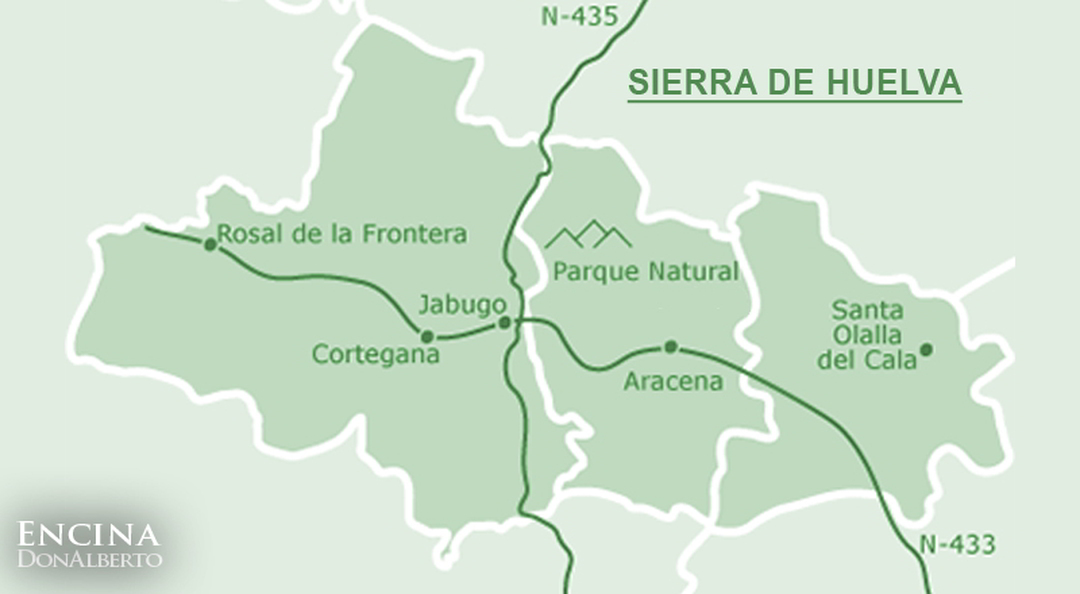TYPES OF HAMS FROM HUELVA

In this post we explain the types of Huelva hams that are produced in the villages of the province, and why they do not coincide exactly with the standard industrial classification.
This is the national standard industrial classification.
There is an industrial classification of the different qualities of Iberian ham at national level that establishes four main qualities.
- 100% Iberian Pata Negra acorn-fed ham (Pata Negra) (free-range pigs).
- Acorn-fed Iberian ham 50/75% Iberian breed (free-range pigs).
- Iberian Cebo de Campo Ham (Semi-free-range reared pigs).
- Jamón de cebo ibérico (Intensive-farm-raised pigs).
Why are Huelva hams different?
In the Sierra de Huelva there are no pig farms and the production companies are mostly small and family-run, with little or no industrialisation. Therefore, all production in the Huelva ham sector is centred on the higher categories of ham, which, due to their production characteristics, are less industrial and more artisanal.
Moreover, the villages in the ham sector dedicated to Huelva ham are located in the north of the province. This area has been declared a Sierra de Aracena y Picos de Aroche Natural Park. The protection of this habitat makes it difficult to build large industries such as exist in Guijuelo or Extremadura. Furthermore, the dehesas are widely distributed among small landowners. There are no large livestock farms.
Therefore, most of the Huelva hams that we can buy on the market come from pigs that are free-range fed by small farmers and produced in very traditional family-run cellars and drying sheds with little modernisation. Therefore, the qualities that can be found among the Huelva hams are as follows.
Varieties of Huelva ham
- Jamón de Huelva de bellota 100% ibérico Pata Negra.
Este es el jamón más alto de gama, y en el que se centra el grueso de la producción de las bodegas de la sierra onubense. Coincide en gran medida con su homólogo de la clasificación industrial estándar. La diferencia principal con éste es que debido a la baja modernización de las bodegas, la curación tiene lugar en secaderos naturales, sin aporte de frio industrial.
- Jamón de Huelva de bellota 50/75% ibérico.
Este es igual al anterior pero procedente de cerdos que no alcanzan el 100% de pureza. Normalmente en la Sierra de Huelva encontramos principalmente cochinos 100% puros en su mayoría, y algunos con un 75% de pureza. Con el 50% de cruce no es muy habitual.
- Jamón de Huelva artesano o de huerta
Este es un jamón procedente de cerdos criados en pequeñas fincas de huertas que viven en semilibertad y se alimentan de pastos, hortalizas, cereales e incluso pueden aprovechar algunas bellotas al final de la montanera. Este es el que menos se ajusta a ninguna de las calidades de la clasificación industrial.
If you want to know how to recognise an authentic Huelva ham, you can see it in this other post:
Prices and how to recognise Huelva ham.
Cebo ham (the lowest category) requires fattening on farms and handling and production in large-scale industries, with automated processes to make it profitable. For this reason, it is not among the products offered by ham companies in Huelva.